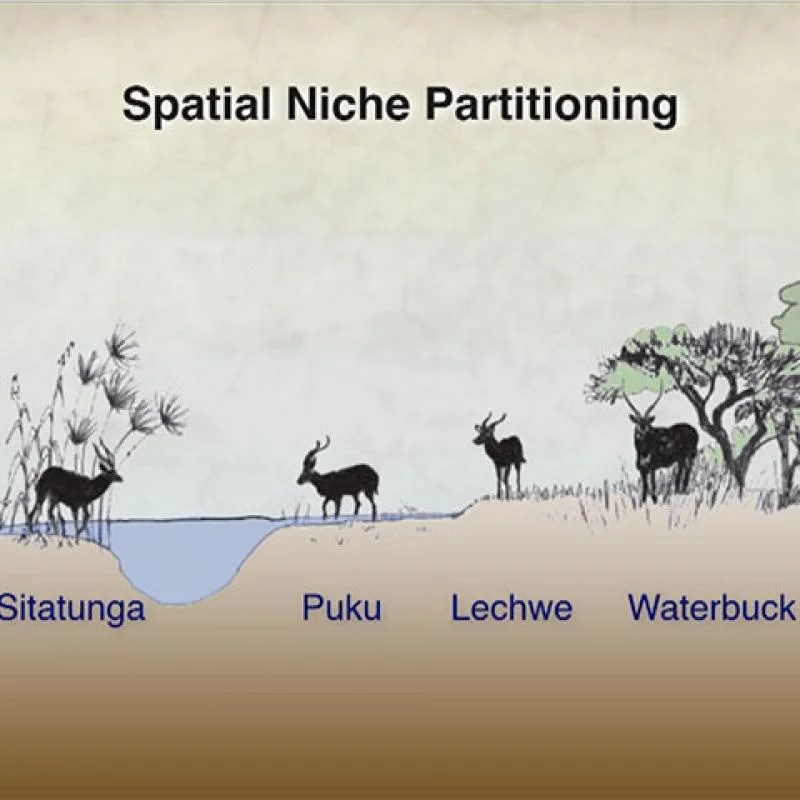Niche partitioning and species coexistence worksheet answers pdf – Delving into the intricate world of niche partitioning and species coexistence, this worksheet unveils the fundamental principles that govern the harmonious existence of diverse species within ecosystems. By exploring the concepts of niche partitioning and species coexistence, this resource provides a comprehensive understanding of how organisms adapt and coexist in their shared environments.
Through real-world examples and engaging activities, the worksheet illuminates the strategies employed by species to minimize competition and maximize their ecological success. By delving into the mechanisms that promote species coexistence, such as resource partitioning, character displacement, and mutualism, this worksheet fosters a deeper appreciation for the delicate balance that sustains biodiversity.
Niche Partitioning and Species Coexistence

Niche partitioning and species coexistence are fundamental concepts in ecology that help explain the distribution and abundance of species in a community. Niche partitioning refers to the process by which species divide up the resources available in their environment to minimize competition.
Species coexistence occurs when two or more species can coexist in the same habitat without one species excluding the others.
Niche Partitioning
Niche partitioning occurs when species evolve to exploit different aspects of their environment. This can include differences in habitat, food sources, or behavior. For example, in a forest ecosystem, some bird species may specialize in foraging for insects in the canopy, while others may forage for fruits on the forest floor.
This division of resources allows both species to coexist without directly competing for the same food.
Benefits of Niche Partitioning
Niche partitioning has several benefits for species coexistence. First, it reduces competition for resources, which can lead to increased survival and reproductive success for all species involved. Second, it allows species to specialize in particular resources, which can lead to increased efficiency in resource use.
Finally, it can promote the development of new species as populations adapt to different niches.
Species Coexistence
Species coexistence is important for maintaining the diversity and stability of ecosystems. When multiple species coexist, they can interact in a variety of ways, including competition, predation, and mutualism. These interactions can help to regulate population sizes and maintain the balance of the ecosystem.
Mechanisms of Species Coexistence
There are several mechanisms that can promote species coexistence. These include:
- Resource partitioning:Species may divide up the available resources in their environment to minimize competition.
- Spatial separation:Species may occupy different habitats or use different parts of the same habitat to avoid direct competition.
- Temporal separation:Species may be active at different times of day or year to avoid competition for resources.
- Behavioral adaptations:Species may evolve different behaviors to reduce competition, such as avoiding each other or adopting different foraging strategies.
Niche Partitioning and Species Coexistence, Niche partitioning and species coexistence worksheet answers pdf
Niche partitioning plays a crucial role in facilitating species coexistence. By dividing up the available resources, species can reduce competition and increase their chances of survival and reproductive success. This can lead to the development of more diverse and stable ecosystems.
Essential FAQs: Niche Partitioning And Species Coexistence Worksheet Answers Pdf
What is niche partitioning?
Niche partitioning refers to the process by which species within an ecosystem divide up the available resources to minimize competition and maximize their ecological success.
How does niche partitioning promote species coexistence?
Niche partitioning allows species to coexist by reducing competition for resources such as food, habitat, and mates, thereby increasing their chances of survival and reproductive success.
What are some examples of niche partitioning?
Examples of niche partitioning include: different species of birds foraging at different heights in a forest, different species of lizards occupying different microhabitats within a desert, and different species of fish specializing in different prey types.

